xPLORATORIU: How we turned TEDxBaiaMare’s photo archive into a interactive story on Apple Vision Pro

Reality check was invited this year by TEDxBaiaMare to built an experience that served a double purpose: bringing the event's rich history to life and showcasing a technology that may affect how we meet those questions in the years ahead.
Every edition of TEDxBaiaMare carries a question. This year's theme "Crossroads" asked what it means to choose when every decision feels crucial. We are at a crossroads economically, technologically, socially and personally. AI is redefining work. Climate change is forcing us to rethink the planet’s future. Society is transforming quickly. Do we take familiar paths or explore new directions? What road do we choose? What do we sacrifice? What do we discover?
Those questions echo loudly through spatial computing. The medium is taking shape, and each day, as creators, we find ourselves at the crossroads. We ask the same things because the answers keep evolving, but our aim stays constant: to build a human centric future, powered by a platform that offers a clean slate for our relationship with technology.
When firsthand demos ignite ideas
A few weeks before the event we sat with the Harpoon Marketing team, who are also the TEDxBaiaMare organizers, for hands‑on demos with Apple Vision Pro.
After guiding well over two hundred people through their first encounter with the device, we have seen that the "wow" moment never fails to arrive, and ideas begin to spark almost immediately as the conversations shift from “What is this?” to "What meaningful experience we could build with it?”.
Each team member left that session with a small breakthrough of their own, and conversations naturally unfolded from there. Some of those revolved around spatial photos and videos, how iPhones can already capture them and how Apple Vision Pro reveals their true depth and dimension. We also discussed Apple’s latest generative AI algorithms, which can transform traditional 2D images into spatial scenes that bring memories to life.
Video credits: Apple
With TEDxBaiaMare running since 2018, the community holds a wide collection of images, moments captured year after year, speaker by speaker, stage by stage. Through conversations with Ciprian Borșan, the lead organizer and Curator at TEDxBaiaMare, hearing the clarity and care with which he speaks about the event’s journey, certain moments surfaced naturally. It became clear, that those were not just photos neatly organized in folders, but rich stories that carried weight, character, and a sense of what the community has built over the years. The idea of bringing that archive to life inside Apple Vision Pro began to feel not only possible but meaningful.
So we approached it from the opposite direction: we began with the stories. With a selection of interesting facts, only then we returned to the archive to find the images that carried them visually. Those pieces together revealed a direction that felt true to the event, honoring its past while inviting people to experience it in a new way.
But one essential challenge remained: How could we transform those memorable moments into an interactive experience rather than a passive one?
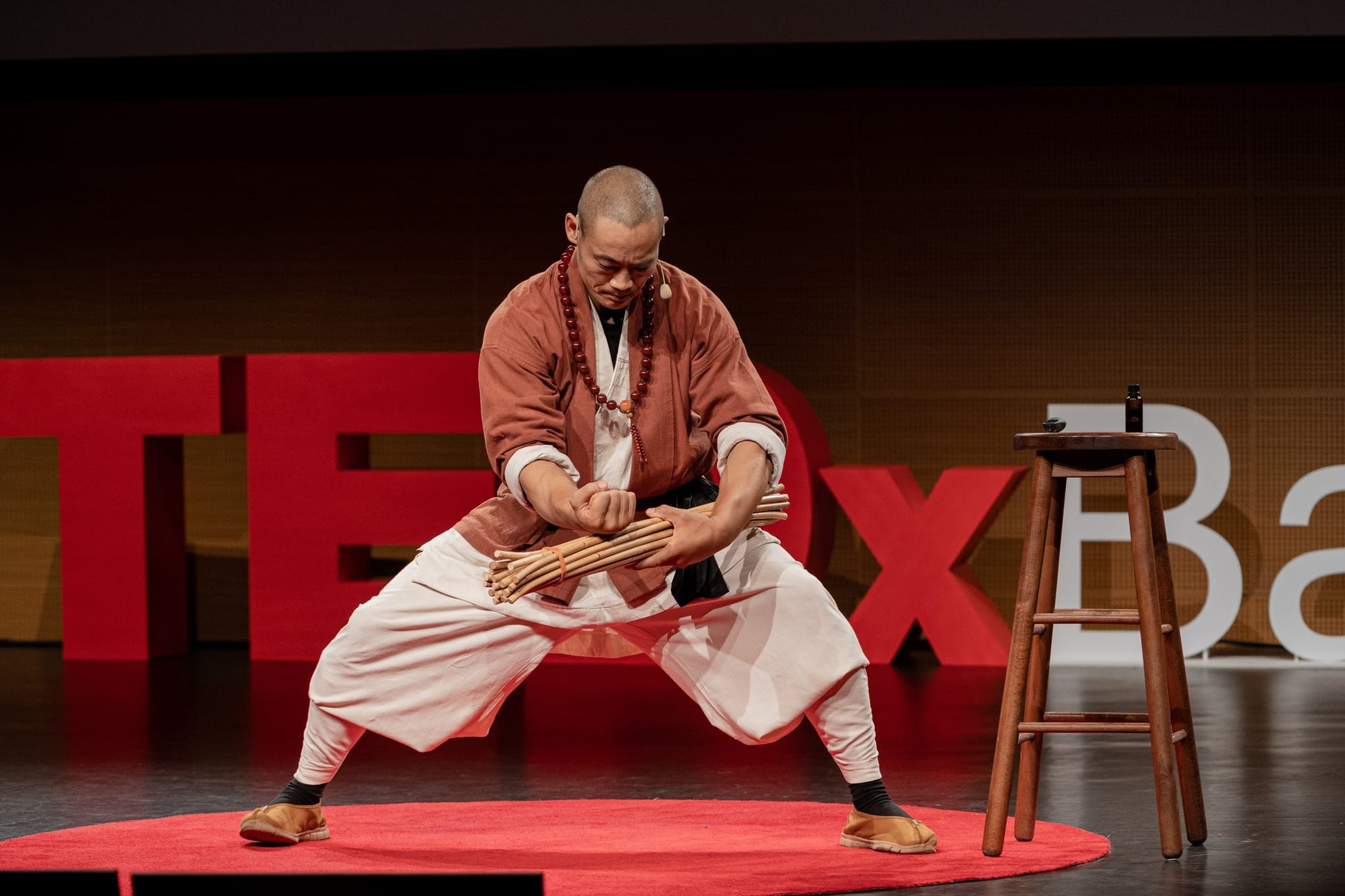


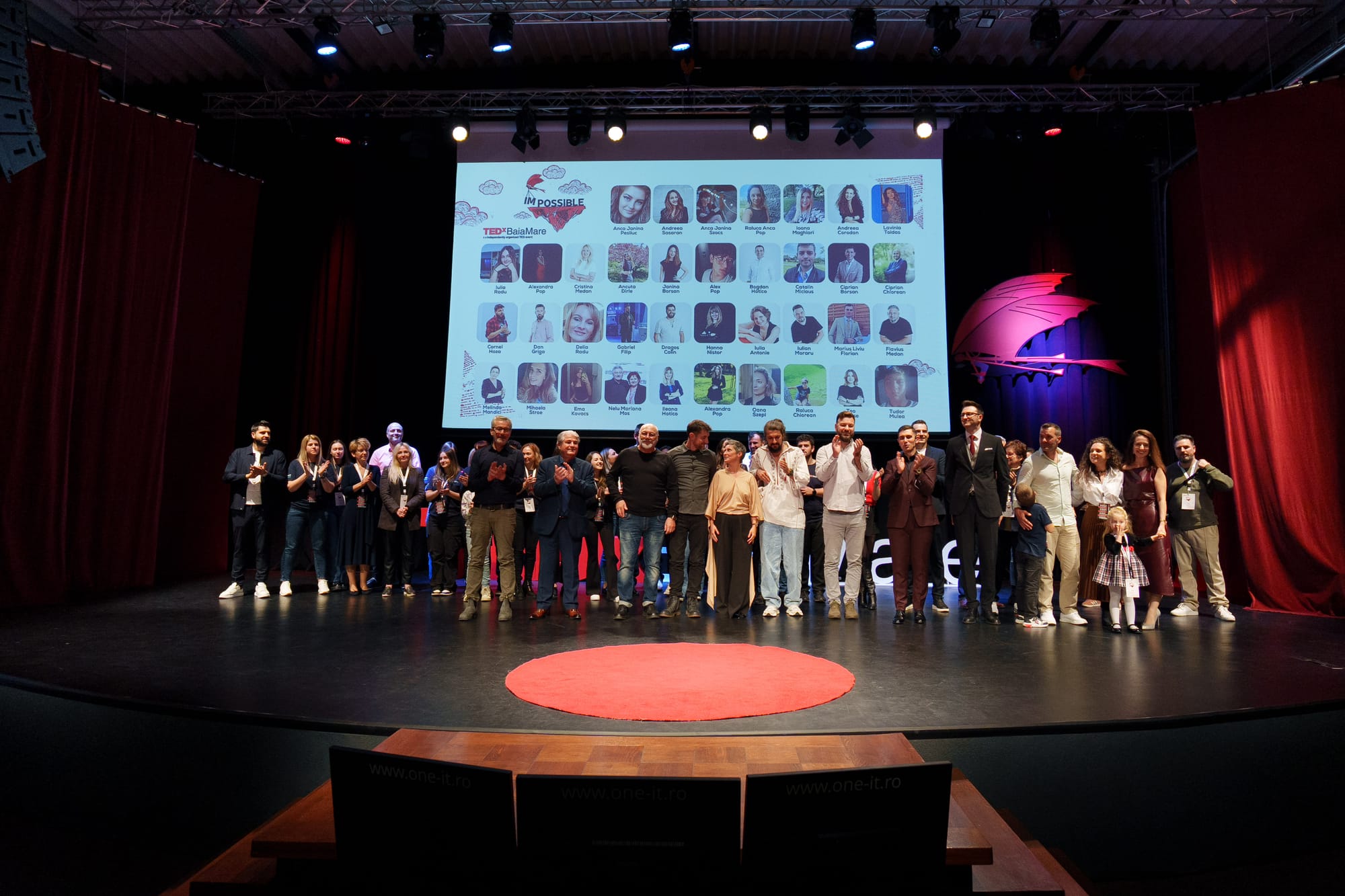
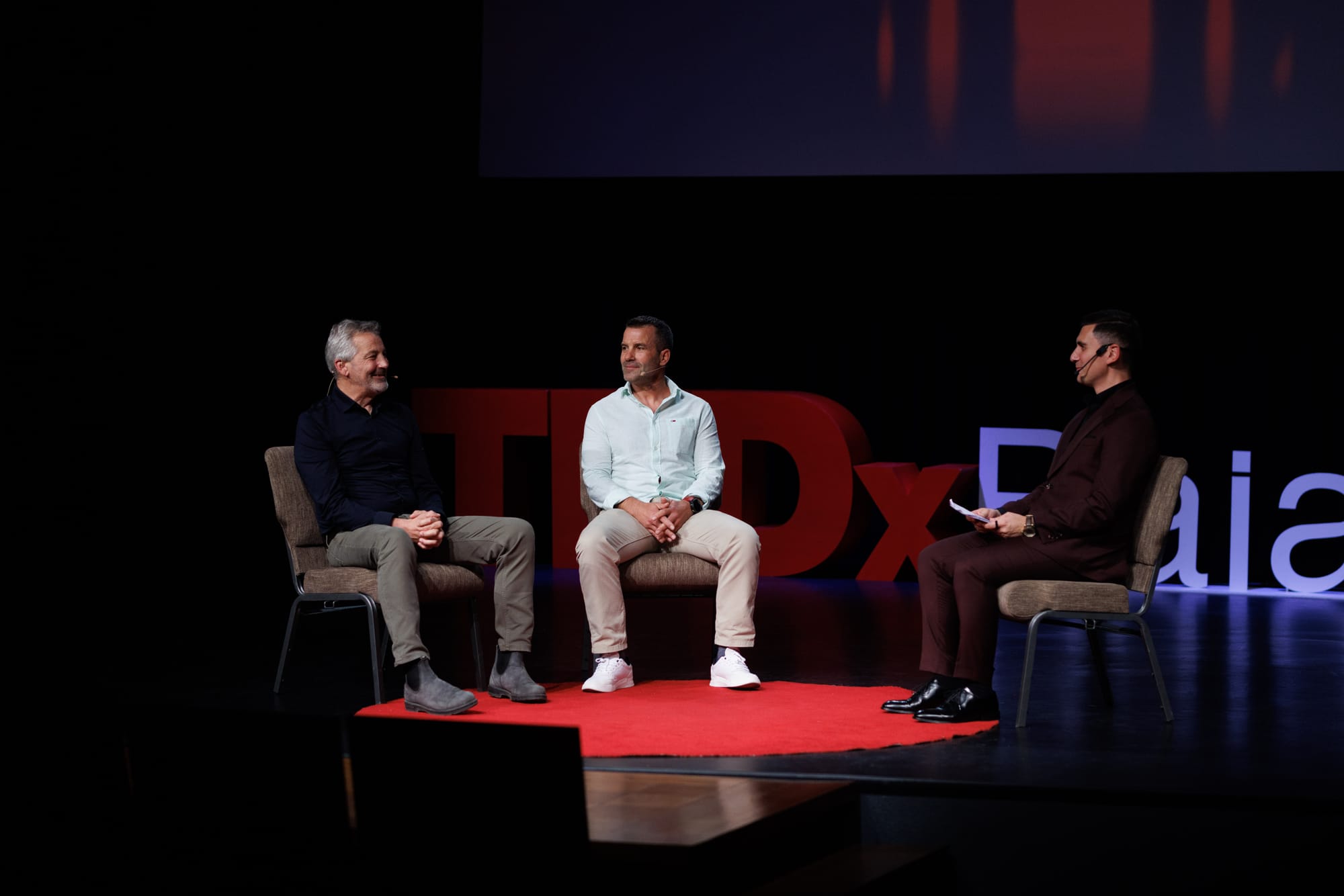

TEDxBaiaMare Archive Photos
Where the concept takes shape
We began shaping the concept by drawing from the same pipeline we used for our collaborative escape room style game for Apple Vision Pro, which we detailed in the article How We Built the Emotional Journey of The Green Spurt – Part I: Laying the Emotional Groundwork.
First we look for the core mechanics, then we define a blueprint for the experience, and finally we align everything with a clear emotional compass and mood.
The main inspiration came from the Etihad Museum in Dubai, dedicated to the story and unification of the UAE. Their exhibitions present complex historical material through simple, tactile interactions that are easy to understand as you walk by. One installation in particular resurfaced in our minds: a table where visitors place themed cubes on a marked area to reveal content linked to each theme. We also recalled Reactable, where objects placed on a surface create or transform musical patterns. Both references carried the same insight: simple, object‑based interactions can unlock surprisingly rich experiences.
From there, we imagined a virtual table at the center of the experience, with a narrow selection ring at its center and six cubes placed around it. Each cube would hold one TEDxBaiaMare theme with a corresponding fact and spatial scene. When a cube is placed inside the selection area, the paired fact and scene appear.
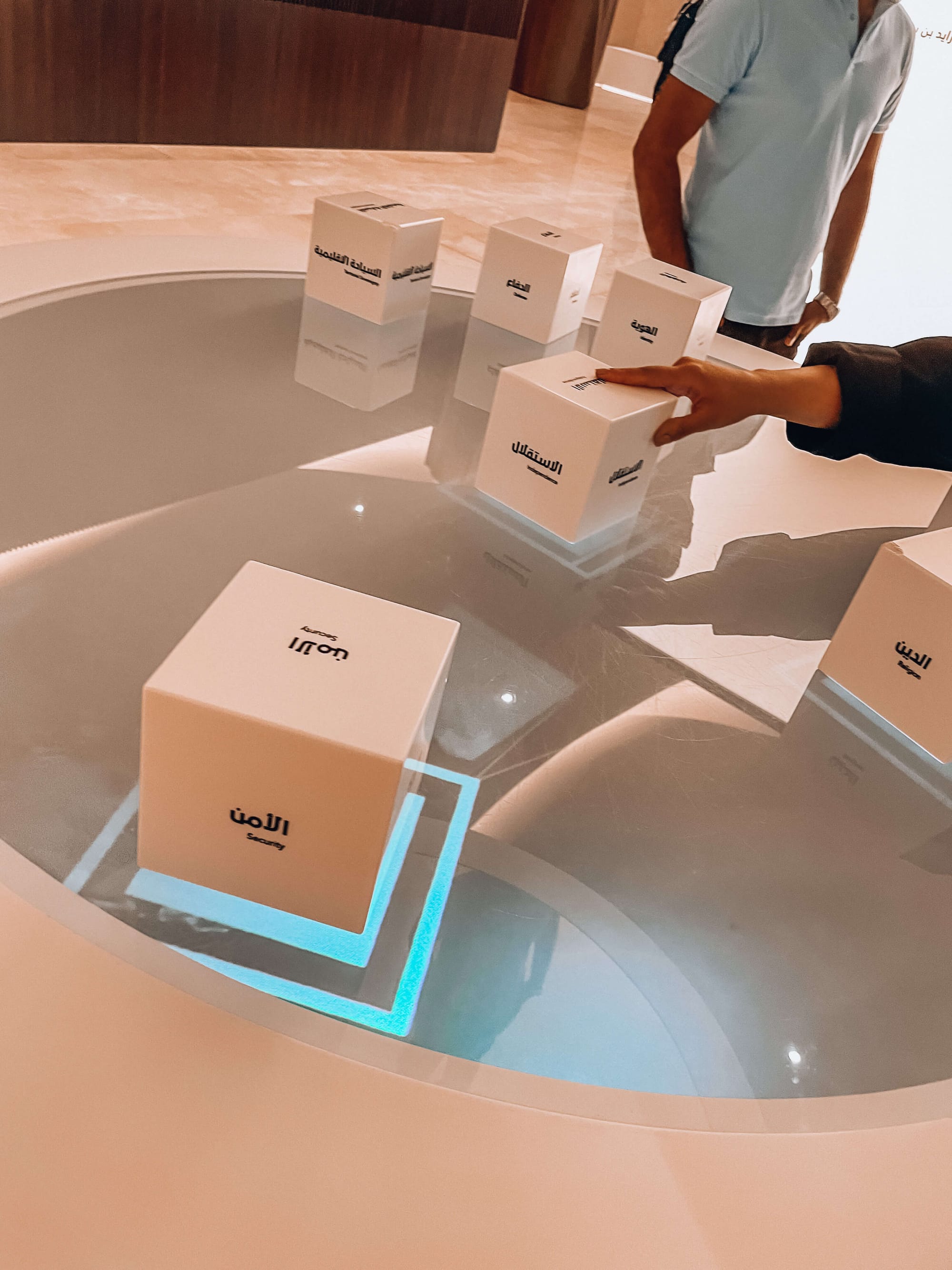
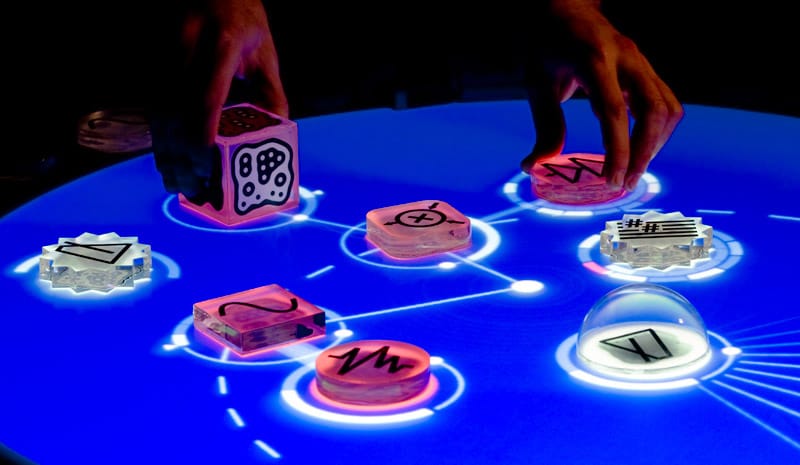
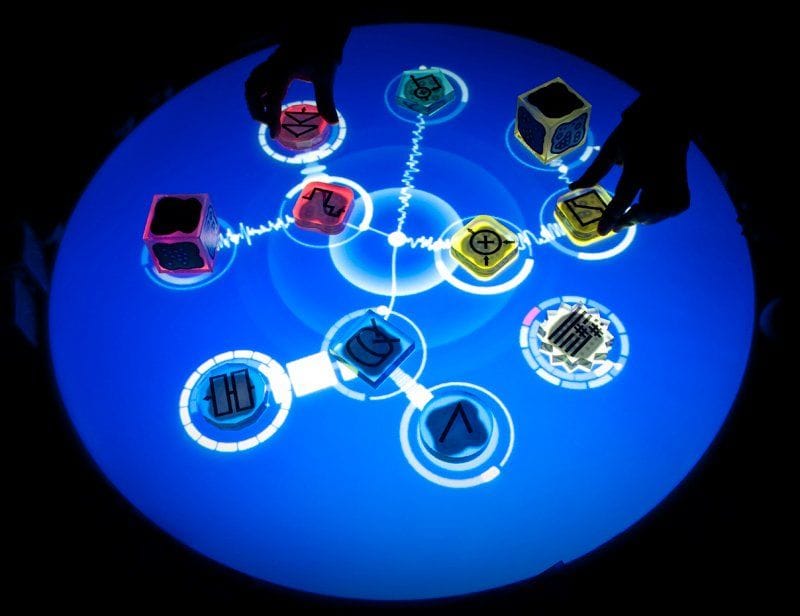
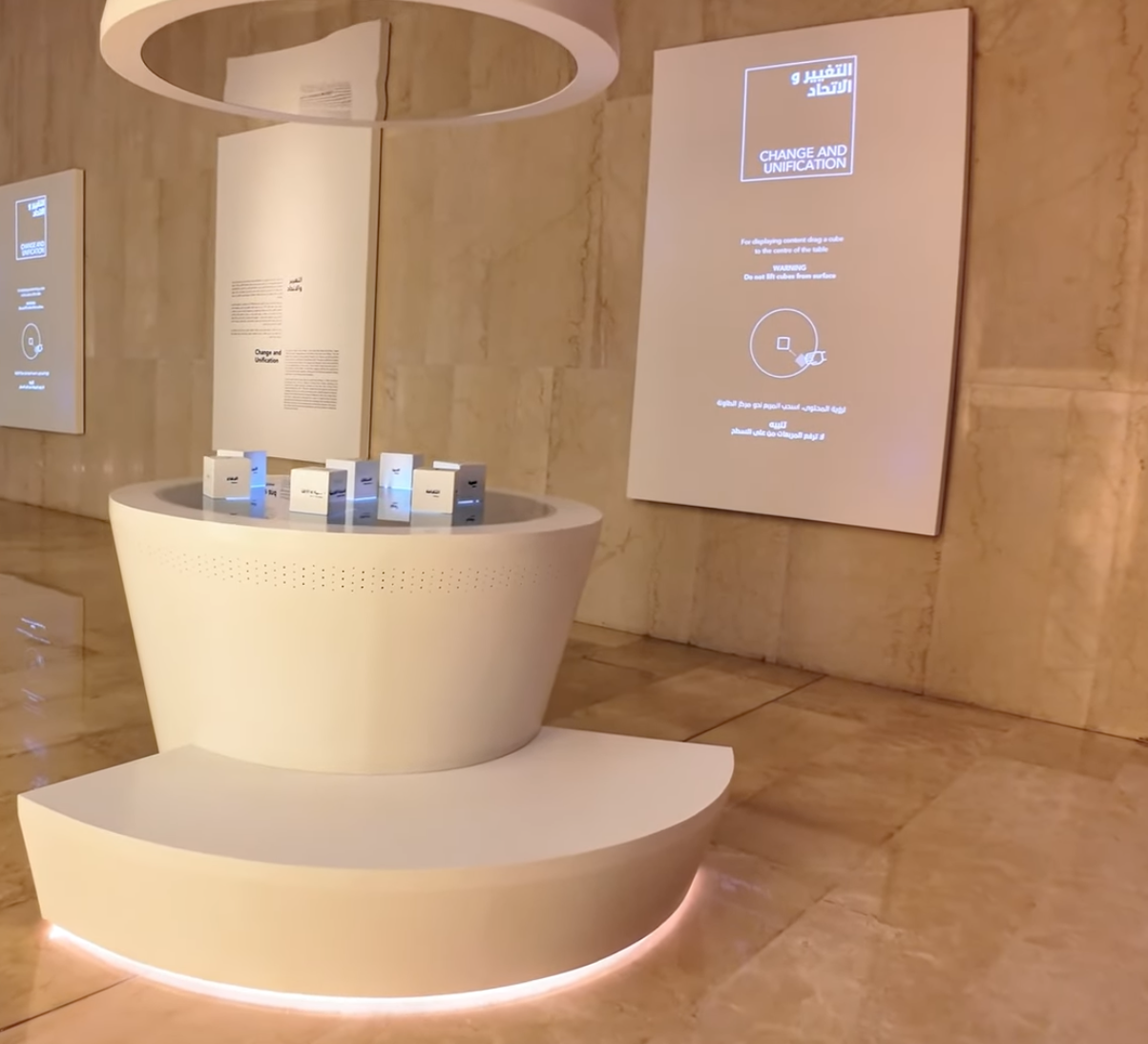
Inspiration: Etihad Museum Dubai and Reactable
We innovated the experience with a gimbal effect we developed specifically for xPLORATORIU, allowing the spatial scene to follow the participant as they move around the table.
The active cube carries a soft highlight borrowed from an upcoming update to our hint system for The Green Spurt, giving a clear indication of what is currently selected.
What emerged was an interaction loop that teaches itself: choose a cube, place it in the ring, watch the story unfold. In that small motion, the concept found its form.
When design elements carry the story
We grounded the look in Maramureș, the region in Romania where TEDxBaiaMare takes place, so the experience would feel at home.
The cubes take the look and warmth of oak, a local symbol of strength, endurance, and wisdom, while the table itself was crafted in bronze, complementing the wood and echoed in public sculptures in Baia Mare, including contemporary bronze art exhibited at Expo 2020.
Early explorations considered the "Nodul dacic", a local traditional symbol, captured through photogrammetry, as the form of the interactive elements. It was an exciting direction, but scanning and preparing those assets would have required additional time. With only five days to bring this concept to life, we proceeded with cubes for their reliability, clarity of interaction, and production efficiency.
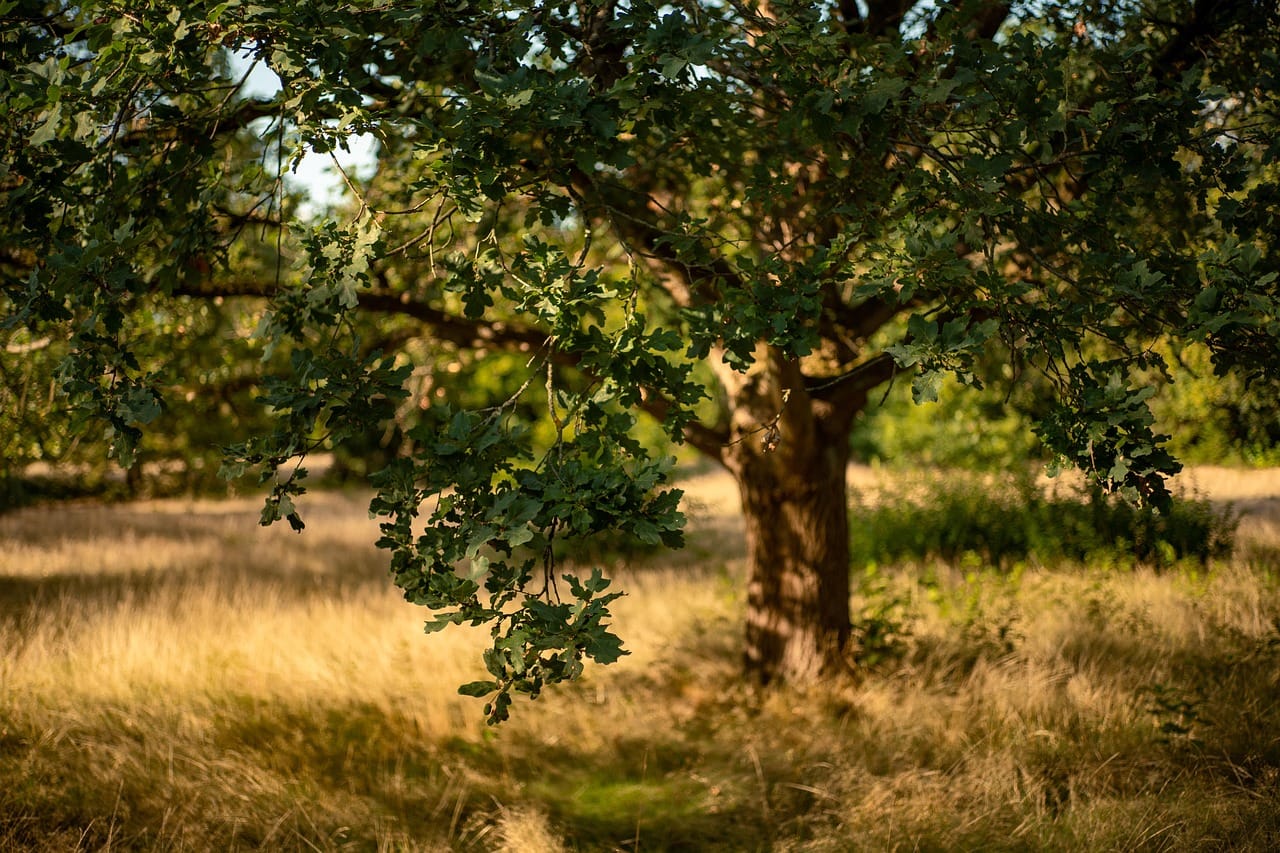
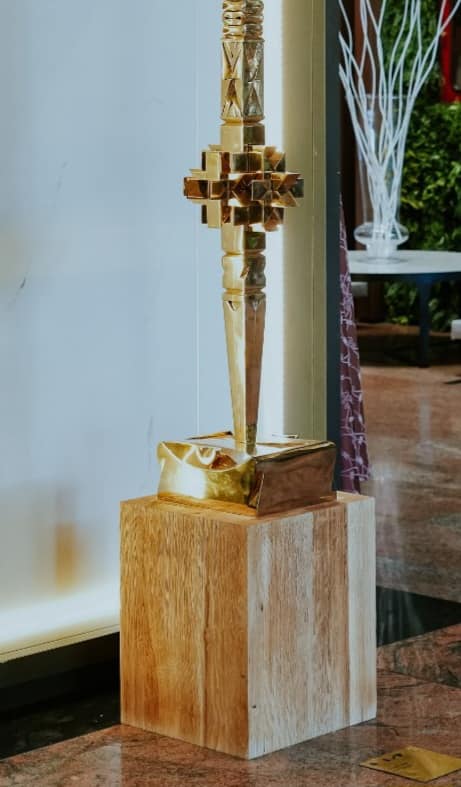
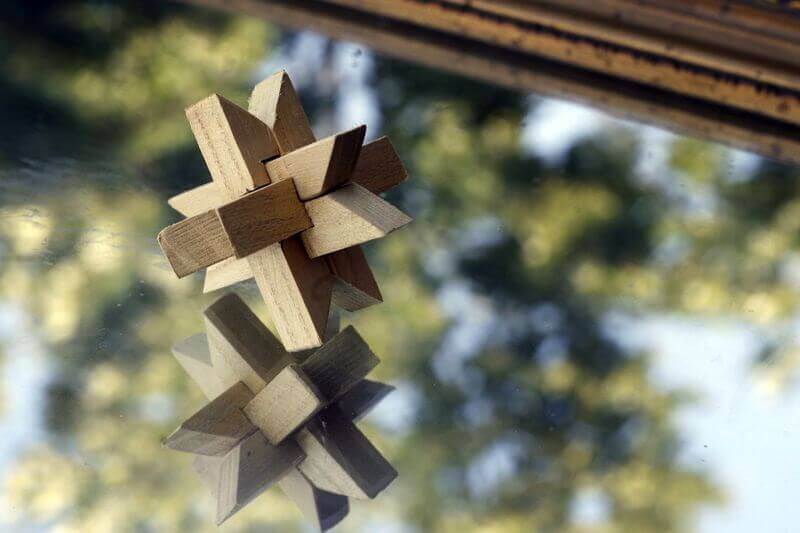
Image credits: Oak tree, Fusul getic, Nodul dacic
Furthermore, the selection area is marked by TEDx’s signature red, a small cue that makes the whole interaction feel woven into the event’s identity.

How sound can hold the room
Presence is not only visual. We produced two ambient tracks with ElevenLabs using generative AI, drawing on regional textures and rhythms so the audio could hold the space without demanding attention. For us, it was also a small but meaningful exploration into how generative audio can shape spatial experiences. The music invited people to pause and reflect, supported conversation, and softened the edges of a busy hall.
Create an ethereal ambient soundscape inspired by the natural beauty and traditions of Maramureș, Romania. The foundation should be soft forest ambience — gentle mountain winds flowing through fir and oak leaves, distant birdsong, and the calm, rhythmic flow of rivers. Layer this with subtle traditional instrumental elements that emerge briefly, like memories — a fluier (shepherd’s flute), a few notes from a ceteră (folk violin), or the deep resonance of a wooden drum, each appearing and fading naturally. The overall mood should be calm, reflective, and timeless, evoking the sensation of walking through a misty mountain valley at dawn, where nature and culture breathe as one. Keep the sound airy, spacious, and organic, with reverberant textures and gentle drones, so the listener feels immersed in Maramureș’s spirit — grounded yet transcendent. Emotionally, aim for peace, nostalgia, and quiet wonder.
TEDxBaiaMare: xPLORATORIU
“From the very beginning, we knew we didn’t want just a spectacular activation, but one with depth that speaks about the community and the evolution of the event. Collaborating with Reality check confirmed that technology can keep emotion alive, amplify it, and convey it in a way that wasn’t possible until now.” (Translated) — Ciprian Borșan, Lead Organizer & Curator TEDxBaiaMare / Co-Founder Harpoon Marketing
How it landed on the show floor
We presented the experience at Harpoon's booth. For all visitors, it was their very first time trying the Apple Vision Pro, and that alone can feel intense in the best possible way. The simplicity of xPLORATORIU landed well. People eased into it at their own pace, discovering how each cube responded and how each scene unfolded.
Very quickly, patterns began to emerge. Some visitors stacked cubes into small towers and then placed them one by one. Others arranged them carefully to build their own sequence. A few experimented more playfully, moving cubes in and out of the selection area just to see what might happen next. Because the interaction stayed simple and forgiving, everyone could find a way of engaging that felt natural.
"It's innovative. I liked how it blends reality with the virtual world. It challenges you to stay grounded by offering new perspectives, and I really like how it creates a valuable learning opportunity." (Translated) — Ioana David, Teacher at “Nicolae Iorga” School, who regularly uses immersive tools like Meta Quest in her classroom
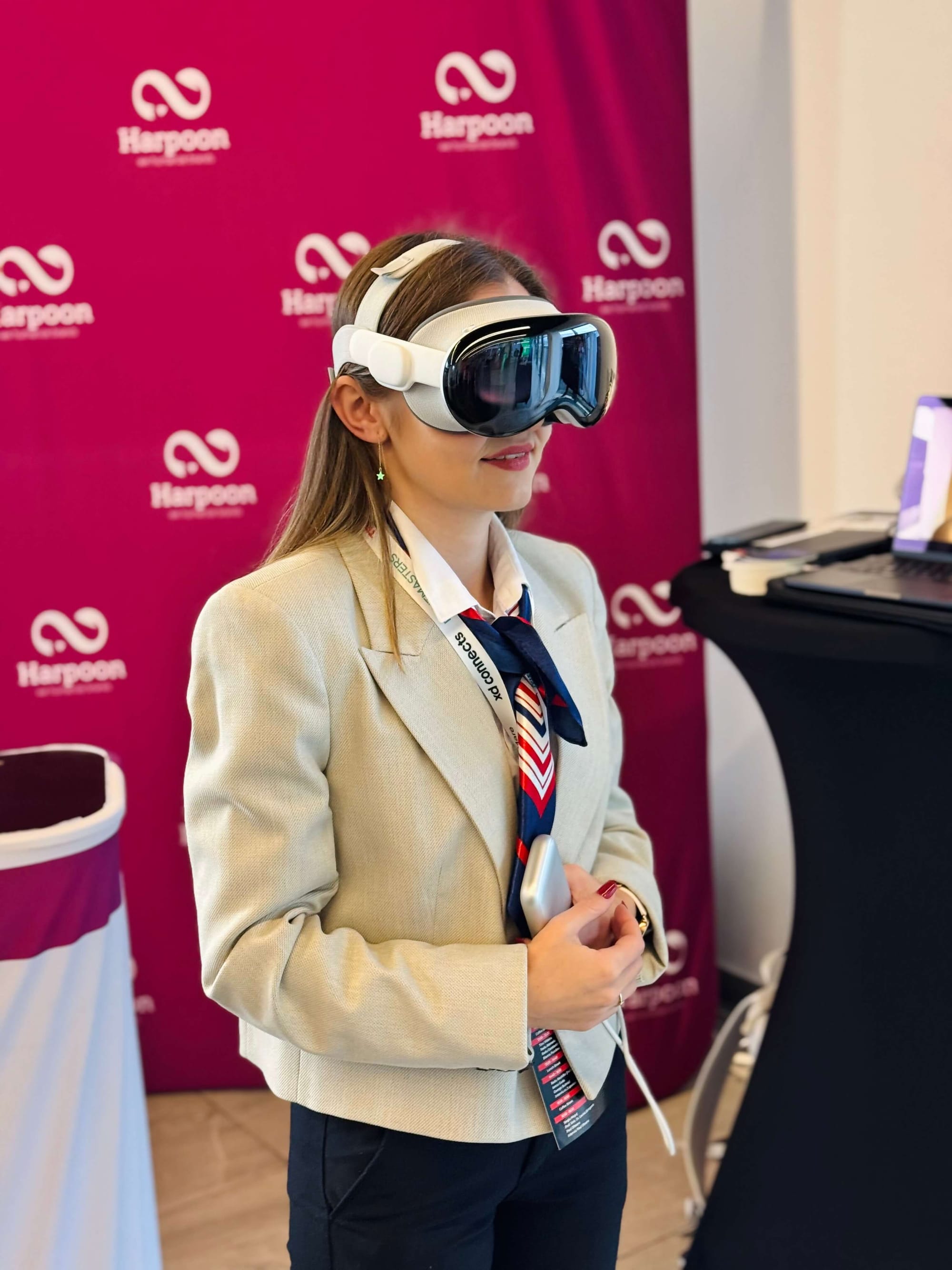

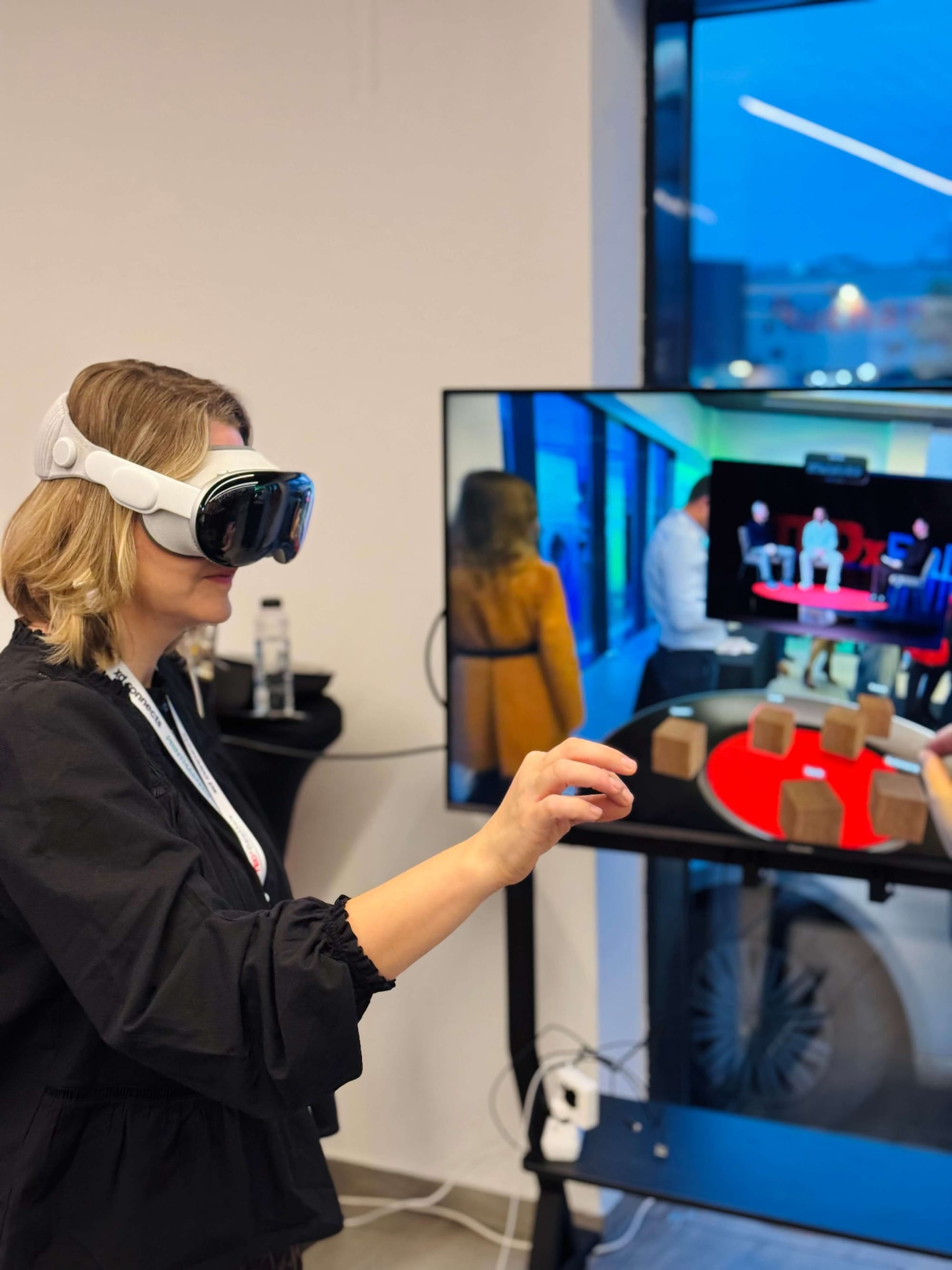
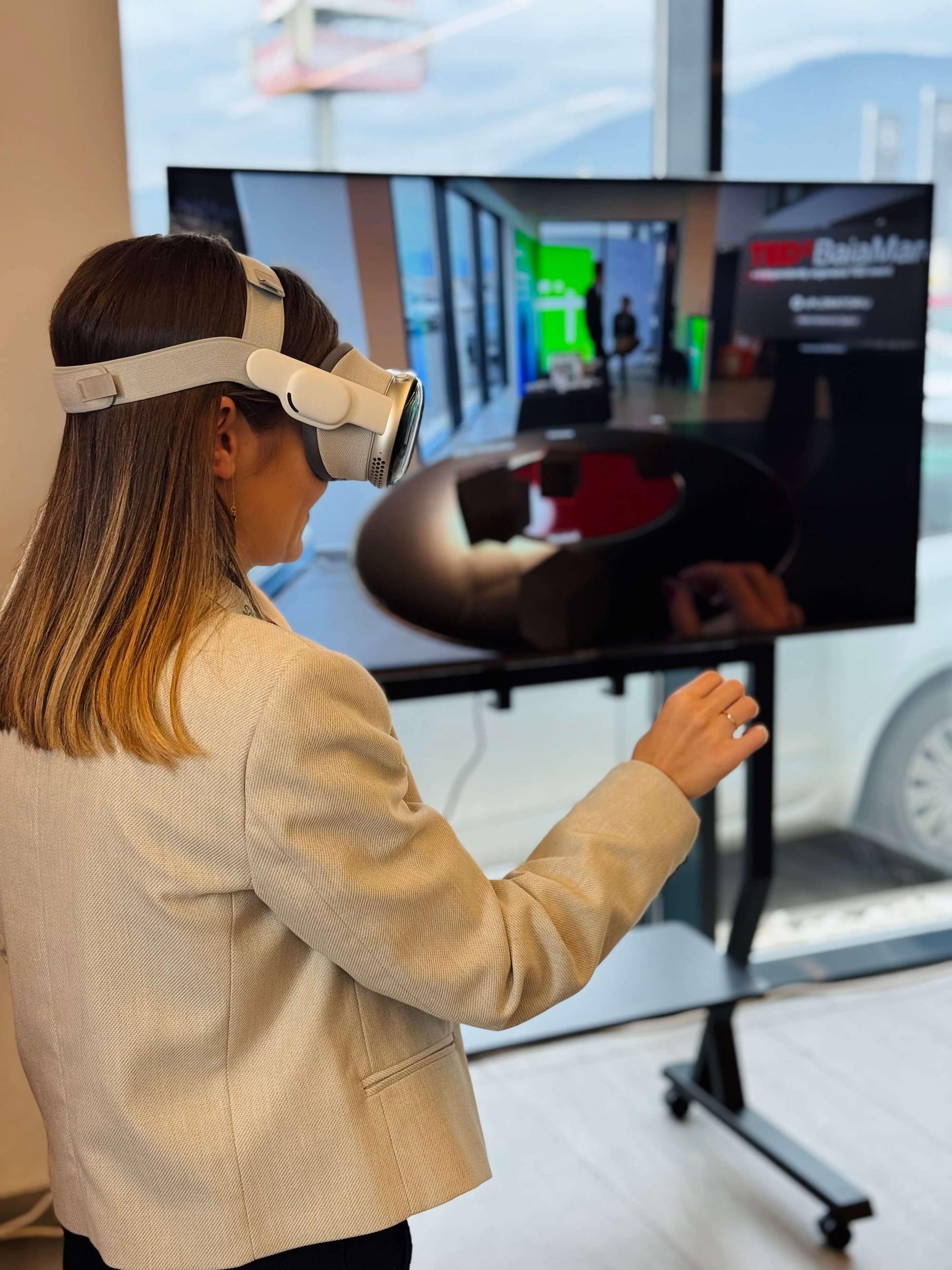
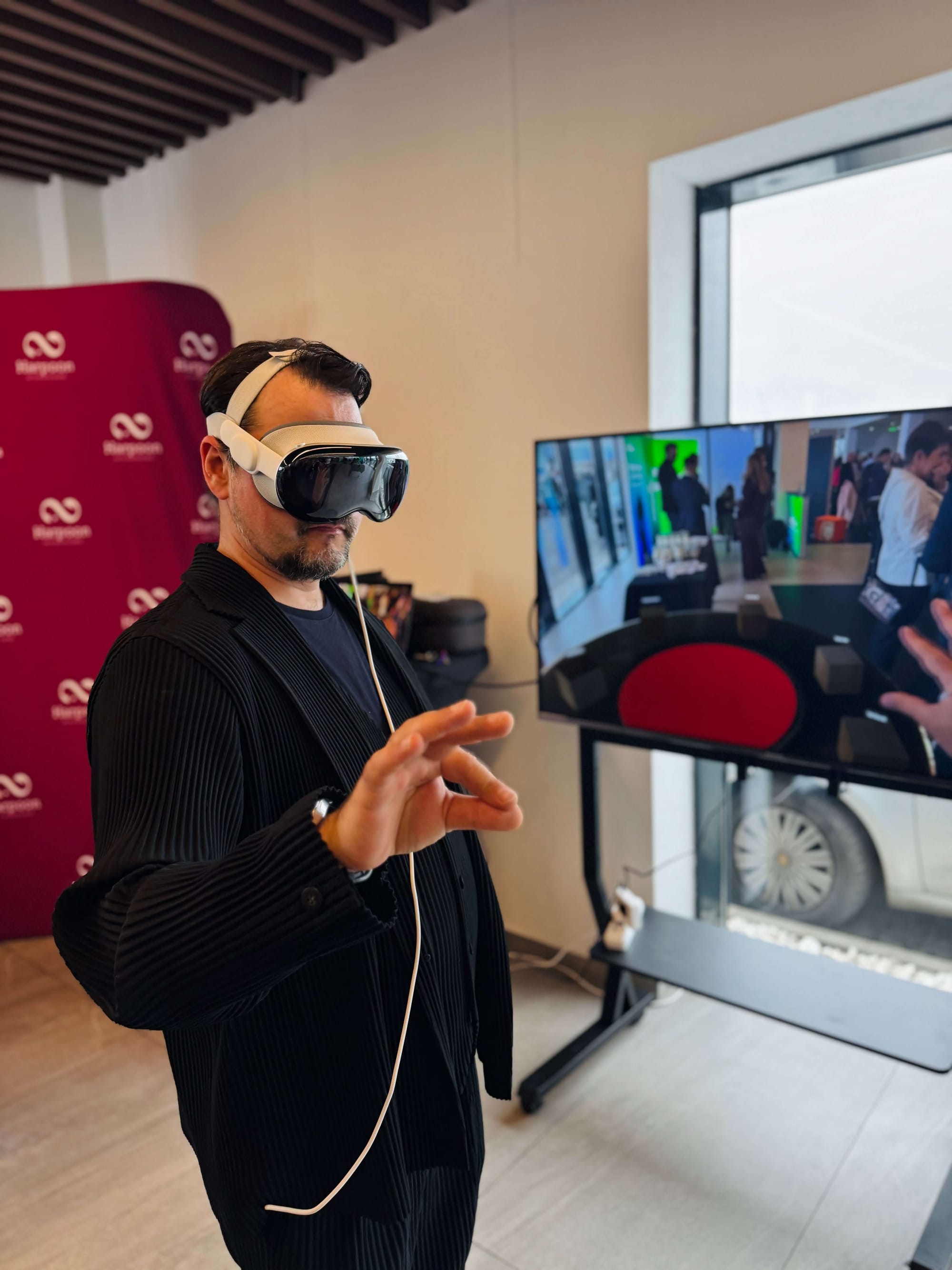
TEDxBaiaMare participants trying the xPLORATORIU experience in the Harpoon booth
What it says about where we are
xPLORATORIU represents something larger: how quickly new forms of storytelling can take shape when curiosity, collaboration, and intention align.
From concept to show floor in just one week, the experience became a reminder that spatial computing is not a distant future, it is a present we can actively shape. In settings like conference halls, museums, and brand heritage spaces where time is short and curiosity is high, formats like this offer a glimpse of what is coming next.
In many ways, the experience also reflects how naturally AI has become part of how we work. At Reality check, we treat it as a companion, one that clears space for creativity, craft and the processes that rely on human intuition.
AI supported several parts of the pipeline:
- Image conversion
- Sound design
- Development workflow
- Writing up this article
These tools didn’t replace the creative process, they extended it. And as spatial computing continues to evolve, AI will help bridge experimentation and craft, shaping the ideas we can bring to life next.
With immersive regards from my digital persona!
